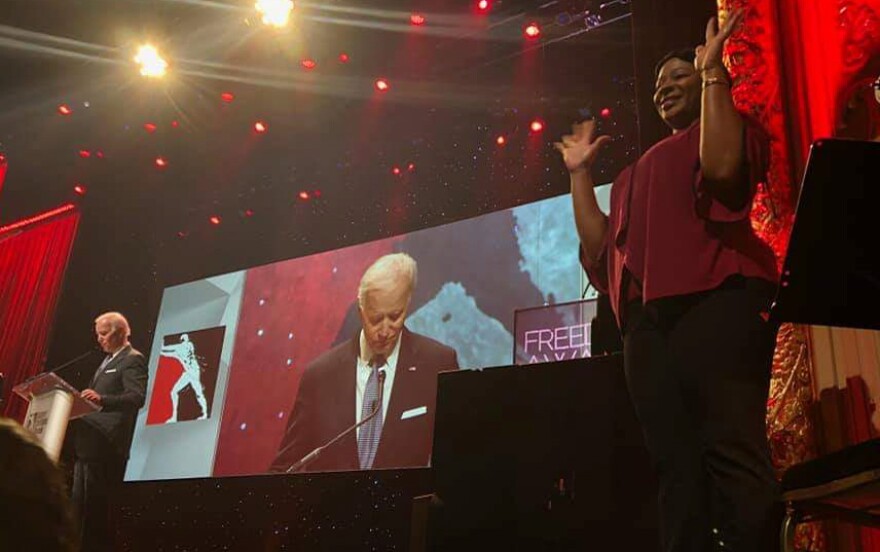Brenda Cash has shared stages with bigwigs like Barack Obama, Joe Biden and Justin Timberlake. That's not to say she craves the attention or spotlight.
“Being in front of a camera was a little bit nerve-racking at first, but knowing that the deaf community was getting the access they need was the calming force,” she says, over a Skype call from her home.
Cash, 45, is the primary American Sign Language, or ASL, interpreter for Memphis' and Shelby County’s coronavirus briefings. Tens of thousands of people watch these 30-minute, lunchtime press conferences for the latest COVID-19 updates, broadcast over the Library Channel and streamed on Facebook.

Standing behind and to the side of regular speakers such as Memphis Mayor Jim Strickland and Health Department Director Alisa Haushlater, Cash is helping the city and county reach more citizens during this public health crisis.
While federal regulations require closed captioning for most television broadcasts, the same rules don't apply for live streams to the web. Some exemptions are made for local broadcasters lacking the capacity or funding to caption live, one-time news events, like press conferences. This is one of the main reasons ASL interpreters frequently appear alongside elected officials during public emergencies.
Without captioning, Cash is a visible reminder that communication is a right that hearing people often take for granted.
“The City of Memphis wanting an interpreter for this COVID event was just heartbreaking and heartwarming because, one at first, the deaf community didn’t have access to that communication and now they do,” says Cash, who grew up with deaf parents and is raising two sons, one also deaf.

Cash has worked as an interpreter for over two decades—currently at the nonprofit Bridges for the Deaf and Hard of Hearing.
About 120,000 people in the Mid-South area have hearing loss of some kind, including those identifying as deaf or hard of hearing. Some are fluent in ASL, a visual language based on hand signals and gestures. Others take in information through lip reading or a combination of communication methods.
“Some deaf people rely on my facial expression, so if I wear my mask, they can’t see what [emotion] or what expression that I’m giving to match the sign so they’ll know the severity of what’s being said,” Cash says.
Animated or emphatic facial expressions are essential to the message. Through body language, Cash interprets both a speaker’s intent and intensity. For example, if someone speaks quickly and forcefully, Cash speeds up her hand movements and evokes a sterner posture.
“At times you may see me frown-up like, ‘You have to take this seriously, you know, it’s not taken lightly,” she says. “If you don't have that facial expression there, they won’t know if it’s actually a serious thing or not because one deaf person can take it one way, and another deaf person can take it a different way.”

The pandemic has also introduced unfamiliar vocabulary for some. Cash can’t use the standard sign for “test,” which denotes the academic, written kind.
To be clear that it’s the COVID-19 test, which employs a long nasal swab, Cash makes a wand-like gesture toward her nose.
“When we introduce a new sign, we would spell the word out first, a few times, and then sign the word behind it,” she says.
And of course, there’s perhaps the most important new sign—that of the virus itself.

“So kind of like a peacock tail on your fist, on the back of your fist,” she says. It mimics the popular illustration of the virus—a gray ball with red dots spiking from its center.
It’s an image that now translates to big trouble in almost every language.
More COVID resources for the deaf and hard of hearing communities can be found at the Bridges website.


